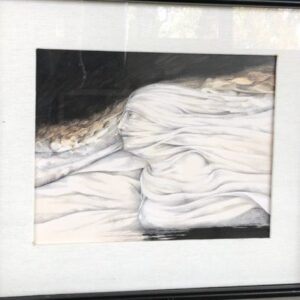Painting / Joy LaVille
$ 38,000.00
108 x 87.5 cm

Hasta 12 pagos sin tarjeta con Mercado Crédito.
Saber más
Descripción
57/100
oy Laville (Helene Joy Laville Perren) was born in the city of Ryde located on the British Isle of Wight in 1923. She was an English-born Mexican painter and sculptor. Both his preparation and his artistic career were developed in Mexico. He devoted himself mainly to painting although he also made bronze sculptures and engravings.
He spent his childhood on the Isle of Wight, in the English Channel, England, which is reflected in his art thanks to his color palette and frequent reference to the sea. From a young age she showed interest in art and painting, but interrupted her studies due to the outbreak of World War II, in which she participated by joining the Yorkshire "Observer Corps".
In 1959 she met the painter Roger von Gunten, who moved to live with her in San Miguel Allende for a couple of years. In 1973 she married Jorge Ibargüengoitia, Ibargüengoitia called her “the lilac woman” and sometimes referred to her as “Cleo” in her writings. He made the illustrations for the covers of Jorge Ibargüengoitia's books.8 He held individual exhibitions in New York, Dallas, Washington DC, Toronto, Paris, Barcelona and London. Along with Rufino Tamayo, José Luis Cuevas, Pedro Coronel and Francisco Toledo, she is considered part of the group called the Rupture Generation, although she did not identify herself as such.3 Some of her works are in the Dallas Museum of Art, National Museum of Women in the Arts in Washington DC, in the Esso Oil of Canada, in the National Bank of Mexico, in the National Bank of Commerce, in the Museum of Modern Art, the José Luis Cuevas Museum and in the Museum of the Archbishopric of the Ministry of Finance and Public Credit.










